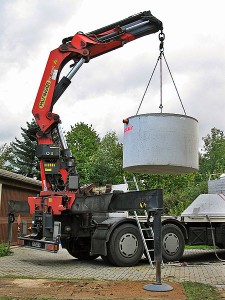This article will hopefully help the reader to better understand will Conserving water will help your lateral lines. Major purchases are not easy to make especially in this economy. Consumers strive hard to make sure that they have all they need and even save some for a rainy day. They do this while working hard at making that first mortgage. To have a house under your name is a milestone for every average, hardworking citizen. It is a legacy that you could leave your children and perhaps even your children’s children. It is only appropriate to make sure that the property you’ve purchased has all of its components intact. The most crucial of all is the septic system.
As you may know, every household should have a fully functional septic system with the right capacity. If you have a large household, then you have to make certain adjustments with the help of your septic expert. If your property’s soil has a goof filtration rate, you will have a conventional septic system installed underground. All the parts of the septic system will be underneath the ground, making it easier for you and your family to move around in your yard. Your septic system has two main divisions—the septic tank and the drain field. The septic tank conducts the primary wastewater treatment with the help of the resident anaerobic bacteria. These beneficial bacteria breakdown the solid waste in the wastewater and turn it into sludge. The heavy sludge is then kept at the bottom of the tank to let the clear, pre-treated effluent to flow into the drain field without any problem. The drain field then further treats and purifies the effluent with the help of the aerobic bacteria and the biomat respectfully. The aerobic bacteria are the ones that also regulate the biomat in the drain field. If the biomat is not regulated, then it will surely clog the drain field.
Your typical drain field is comprised of drain field lines. These lines are perforated so that the effluents could be evenly distributed throughout the yard. They need to be professionally installed because if they are not level enough, the effluent will just flood to one part of the yard. Lateral lines are affected by several factors. Observe the following so that you won’t have to deal with a failed septic system:
- Take good care of your septic system by conserving water to help your lateral lines. Experts say that the drain field lines are often affected by the condition of the septic tank. If the septic tank is clog and sludge-free, you won’t have any problems with the drain field lines. Here are some of the ways you could care for your septic tank:
- Perform regular pump outs for your septic tank to eliminate the sludge. If the sludge is not removed on schedule, the solid waste materials will flow into the drain field and clog everything.
- Never dump non-biodegradable materials and grease into your toilets and drains. These will accumulate and block the normal flow of your wastewater treatment.
- Avoid pouring harsh chemicals into your drains or toilets. These compounds kill off the resident bacteria. If there are no bacteria, there will be no wastewater treatment at all. Resort to environment friendly cleaning materials. They may be a bit costly but you will be assured of a safe, optimal septic tank
- Remove any nearby hardwood plants. The root systems of these hardwood plants are complex and intense. They make their way into the drain field lines to gain access to water and nutrients. Use environmentally safe root killers to get rid of the roots without harming the environment.
- Practice water conservation. Conserving water to help you care for your lateral lines should be practiced as part of your normal routine since this alone will help extend the life of your drainage system. This prevents excessive amounts of water from introducing sediments and more water into the lateral lines, which will result to wastewater backups and wastewater flooding.
Always communicate with your septic expert so that you could have a clog-free, optimal lateral line system and a worry free septic in general.
